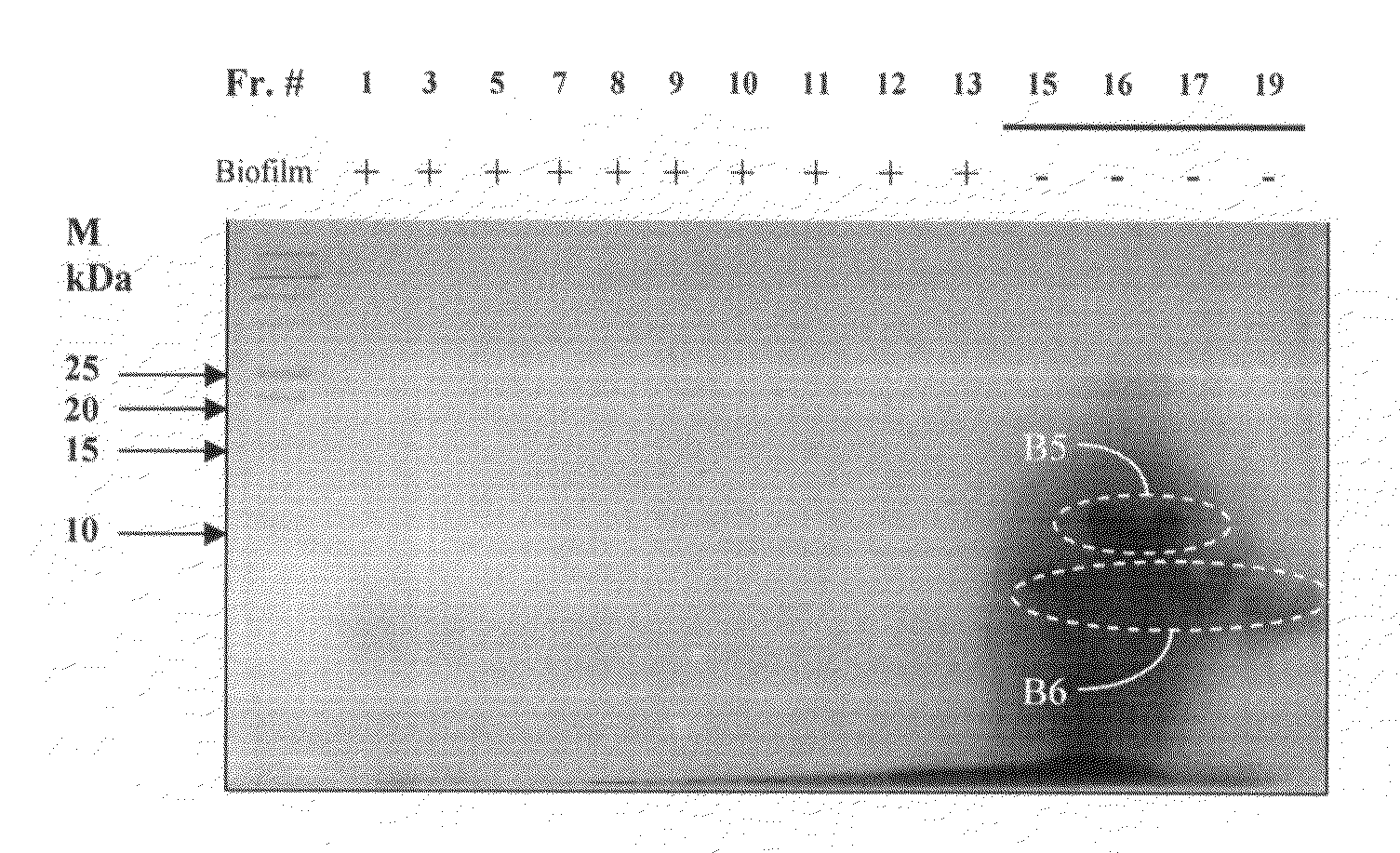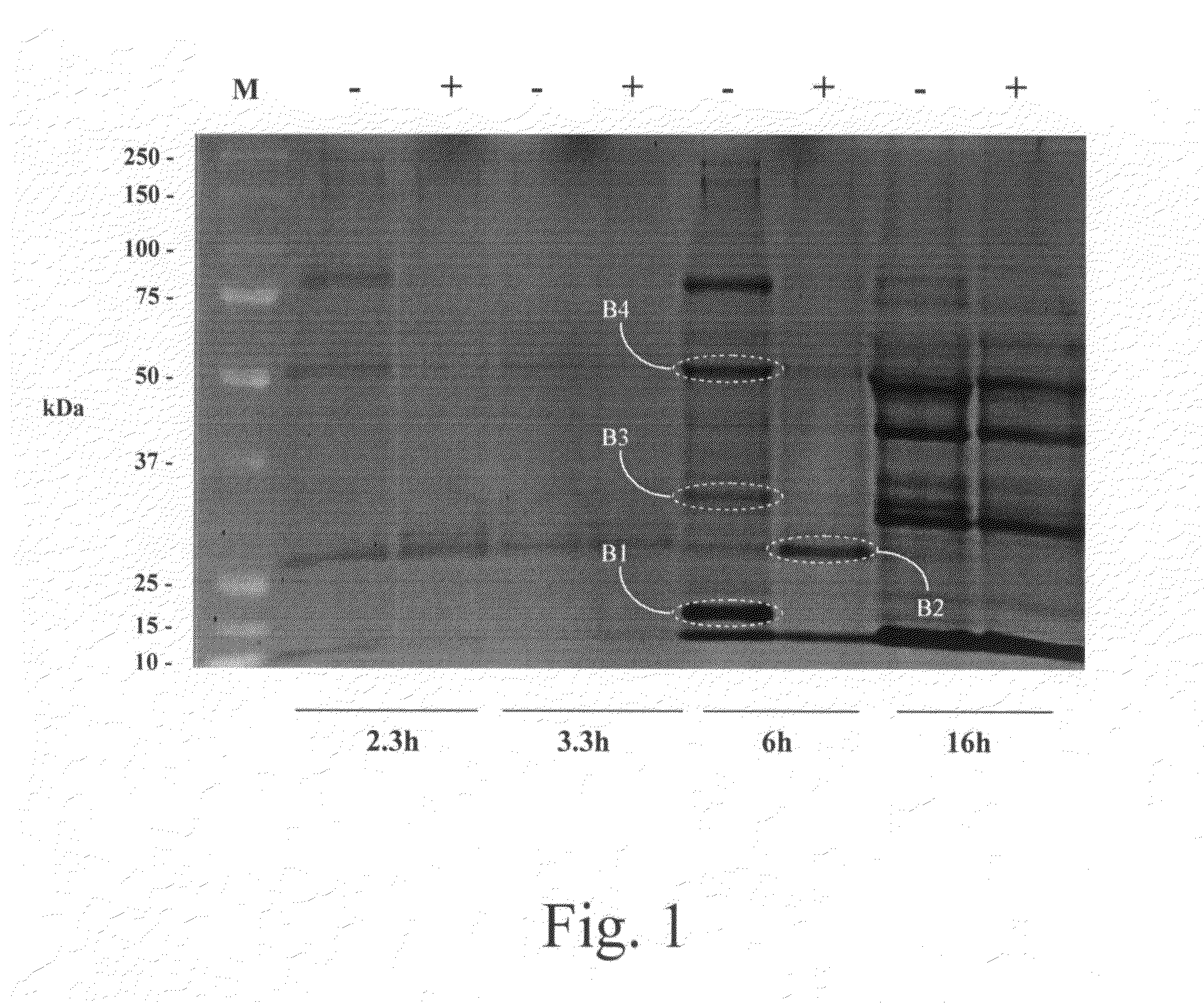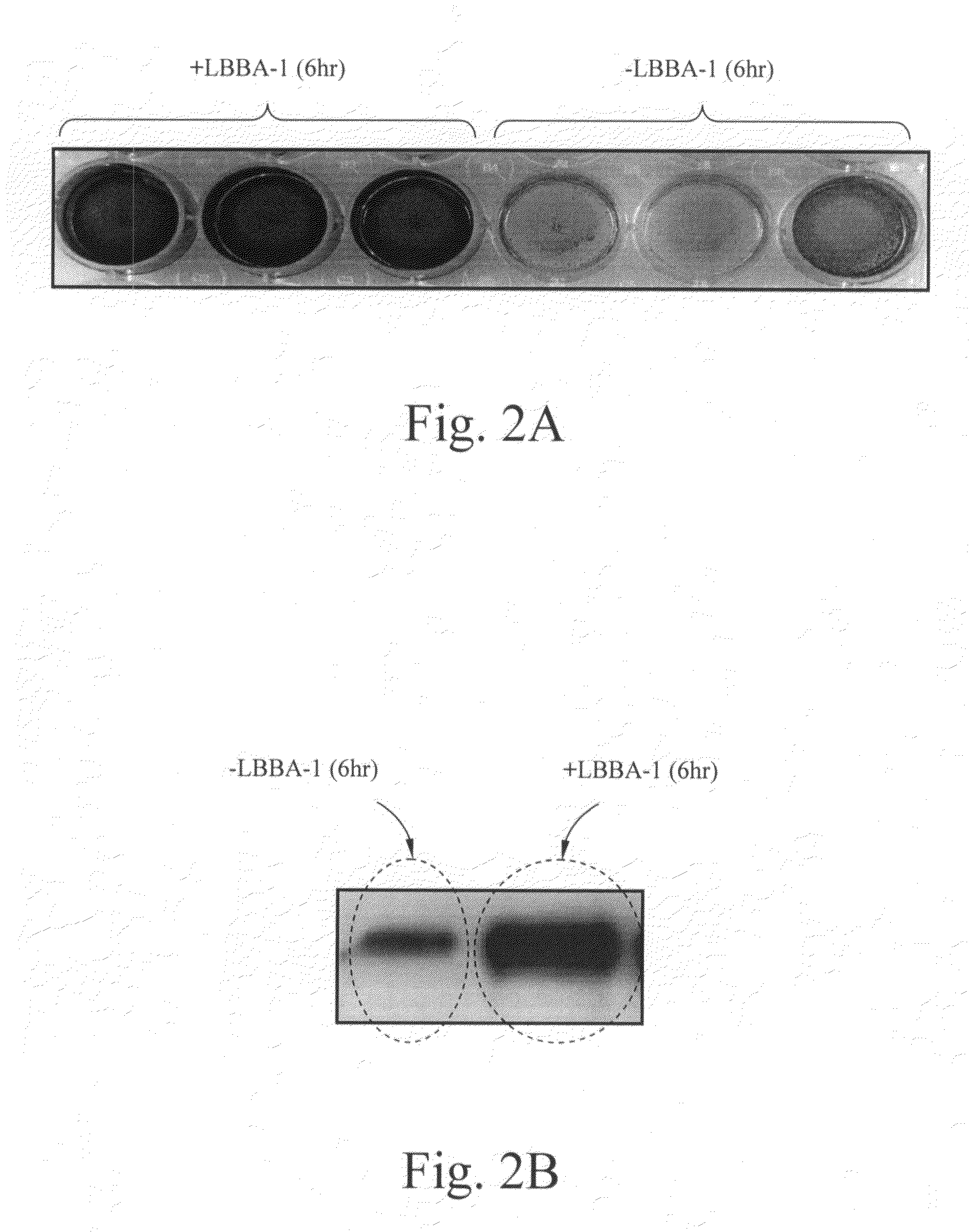Compositions & methods for activation and inhibition of Staphylococcus aureus biofilm development
a technology of staphylococcus aureus and biofilm, applied in the direction of biocide, peptide/protein ingredients, peptide sources, etc., can solve the problems of food poisoning, food poisoning, food poisoning, and food poisoning, and achieve the effect of modulating the virulence factor associated with the bacterial biofilm and reducing the risk of infection
- Summary
- Abstract
- Description
- Claims
- Application Information
AI Technical Summary
Benefits of technology
Problems solved by technology
Method used
Image
Examples
Embodiment Construction
1. General Overview
[0027]The present invention includes: (a) compositions for activating (modulating) biofilm formation (gymnemic acids); (b) a composition for inhibiting biofilm formation (gurmarin); and (c) a novel method for isolating the biofilm inhibitor (gurmarin) from a botanical extract (Gymnema sylvestre). These compositions are shown to have particular efficacy with respect to Staphylococcus aureus bacteria biofilms. The isolation method is applicable to a range of peptides capable of being isolated from botanical extractions.
2. Activator (Modulator) Compositions & Effectiveness
[0028]The present invention identifies novel small molecule compounds which activate Staphylococcus aureus biofilm development in vitro, specifically, the identification of a S. aureus biofilm activator (referenced herein as “LBBA-1” from “Laks Biotech Biofilm Activator 1”) containing a mixture of gymnemic acids and other saponins. Gymnemic acids are a group of triterpine glycosides that inhibit swe...
PUM
| Property | Measurement | Unit |
|---|---|---|
| apparent molecular weight | aaaaa | aaaaa |
| molecular weights | aaaaa | aaaaa |
| molecular weight | aaaaa | aaaaa |
Abstract
Description
Claims
Application Information
 Login to View More
Login to View More - R&D
- Intellectual Property
- Life Sciences
- Materials
- Tech Scout
- Unparalleled Data Quality
- Higher Quality Content
- 60% Fewer Hallucinations
Browse by: Latest US Patents, China's latest patents, Technical Efficacy Thesaurus, Application Domain, Technology Topic, Popular Technical Reports.
© 2025 PatSnap. All rights reserved.Legal|Privacy policy|Modern Slavery Act Transparency Statement|Sitemap|About US| Contact US: help@patsnap.com



